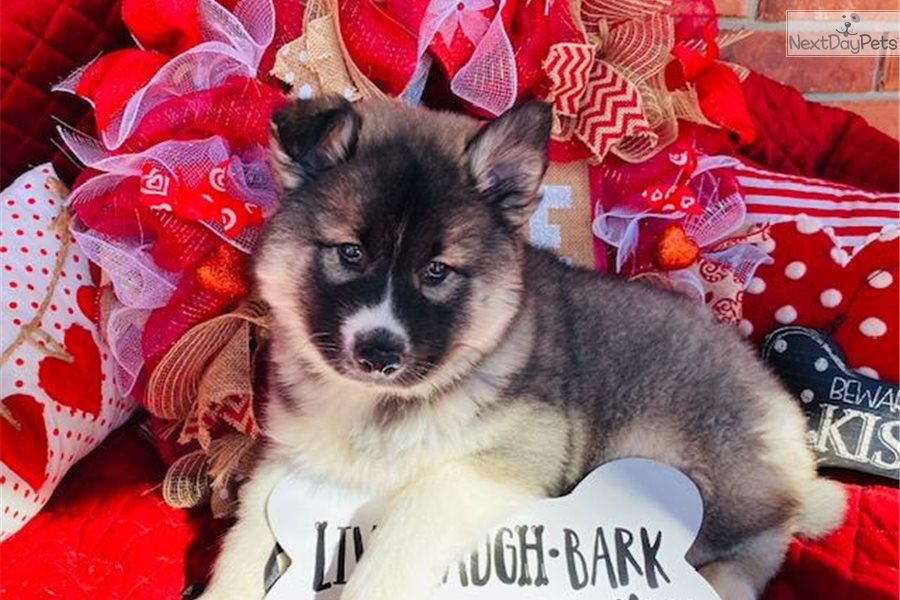

The Siberian Husky is one of only a select few breeds which is allowed different-colored eyes in the show ring, and one of only a few breeds to commonly have blue eyes. Bi-eyed Siberian Huskies have one blue eye and one brown or hazel eye while parti-eyed Siberian Huskies have irises of blue mixed with another color. The Siberian Husky's eyes are blue, green, brown, or hazel. Some Siberian Huskies have a winter nose which fades to pink in the winter the color change can be permanent in older dogs. It has a round skull with almond-shaped eyes and triangular, erect, furry ears. Size The Siberian Husky has a shoulder height of 51-60 cm (20-23.5 in) and weighs 15-28 kg (35-60 lbs). A female Siberian Husky mix named Laika became the first animal to enter orbit when she was launched into space on Sputnik 2.

Siberian Huskies are the mascots of Northeastern University and Michigan Technological University. Siberian Huskies appear prominently in Disney films Snow Dogs, Eight Below, and Iron Will, all based to some degree on true stories of heroic Siberian Huskies. Today the Siberian Husky is one of the most popular northern breeds, serving as a pet, sled racing dog, and show dog. Most Siberian Huskies today descend from the 1930 exports and Leonhard Seppala's team. In 1930, Russia allowed the last group of Siberian Huskies to be exported from Siberia the breed was recognized by the American Kennel Club that same year. A statue honoring Seppala's team stands today in Central Park. This delivery became known as the Great Race of Mercy and attracted much attention to the Siberian Husky. It gained further prominence in 1925 when a gold miner named Leonhard Seppala used a now-famous team of Siberian Huskies to make an urgent delivery of diphtheria serum to Nome, saving thousands of lives.

The Siberian Husky attracted attention when it completely dominated native breeds in the 400 mile All-Alaska Sweepstakes race from Nome to Candle in 1910, the second year in which it competed. It was imported to Alaska in the early 20th century during the Alaskan gold rush. Country of Origin The Siberian Husky (also known as the Chukcha, Keshia, or Arctic Husky) originated as a sled dog for the Chukchi tribe of Eastern Siberia (in northern Russia) several thousand years ago.


 0 kommentar(er)
0 kommentar(er)
